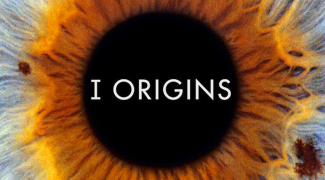You know Sharbat Gula, or at least you’ve seen her. She is the Afghan woman whose eyes blazed from the cover of the June 1985 National Geographic, securing Steve McCurry’s place in the photographers’ hall of fame. McCurry knew nothing about the woman he photographed. She was there and gone, no name, no background. But in 2002, she was identified as Sharbat Gula by way of iris recognition.
It turns out that eyes are like fingerprints, and no one has the exact same iris pattern – not even twins. Seventeen years after they made her famous, Sharbat Gula’s eyes changed her story again: after identifying Gula, National Geographic paid her family’s medical expenses. Now, twelve years later, they’ve inspired another story, this time a sci-fi-touched indie film.


That film is Mike Cahill’s I Origins, and even if you somehow overlooked the prominently placed photograph of Gula in the diner scene, the connection to the famous photograph would be hard to miss. The film explores a lot of things – science, religion, love, grief – but revolves around the idea of the eyes being the window to the soul. Searching for a woman by her eyes alone is a central part of the story.
This past Tuesday I had the unexpected opportunity to attend an advanced screening of I Origins, thanks to a friend of mine who secured two free passes (I still don’t know how she does these things). I wasn’t sure what to expect, but was pleasantly surprised – and not just by its original concept.
I Origins feels a bit like an love letter to film. The scenes have a kind of poetry to them that doesn’t happen in the real world, moments where the characters are almost too in sync to be believable (the headphones scene comes to mind). But the simplicity of these scenes and the ethereal tone of the film overall made me more willing to suspend disbelief, to embrace the beauty of those moments. It’s like the feeling you get when the bad guy is justly punished at the end of the story. It’s the pleasure of looking into a world where things make a dark but satisfying kind of sense.
After the screening, Cahill and lead actor Michael Pitt came out for a Q&A session. Cahill in particular had a lot of really interesting things to say, like how Sharbat Gupta’s story had gotten him thinking about eyes. The most striking of the other comments he made concerned three key moments in the film, which means that if you haven’t seen I Origins and you’re planning to, you might want to stop reading here.
The first point concerned the song Ian plays for Sofi on the bus (which if I recall correctly is the same song that was playing at the party where they first met). Apparently it was originally a different song, but Astrid Bergès-Frisbey walked onto set the day of the bus shoot and said, “I think Sofi would like this song.” Cahill, trusting that she would know her character’s tastes best, decided to go with it, and the result is beautiful. The song is Dust It Off, by The Dø:
The second point concerned Sofi’s death, which Cahill said was inspired by Aristophanes’ speech on soul mates from Plato’s Symposium. He was cut off by a much less interesting question from an audience member before he could explain further, but I read the speech and I think the relevant lines are eerily apparent:
[Zeus] said … ‘They shall walk upright on two legs, and if they continue insolent and will not be quiet, I will split them again and they shall hop about on a single leg.’ He spoke and cut men in two, like a sorb-apple which is halved for pickling, or as you might divide an egg with a hair … After the division the two parts of man, each desiring his other half, came together, and throwing their arms about one another, entwined in mutual embraces, longing to grow into one … So ancient is the desire of one another which is implanted in us, reuniting our original nature, seeking to make one of two, and to heal the state of man.
Read the full speech here.
The third point had to do with the creation of the final revelation about Salomina in the hotel. Cahill put an impressive amount of effort into making sure the revelation would hit the viewer in a slow wave, building from recognition to realization. Ian’s hotel in India was designed to have the same layout, the same spaces and sizes and corners, as Sofi’s apartment back in the US, so that the audience would begin to get a sense of déjà vu without consciously realizing it. The man in black was added as a distraction – presumably one that would heighten the religious tension – to keep the audience from thinking about Salomina and the elevator.
For me, at least, it worked exactly as Cahill meant it to. But see what you think. I Origins hits theaters today, so you don’t need a friend with a nose for advanced screenings in order to watch it. Go with an open mind. You’ll leave with a lot to think about.
I feel this is important information for all of us
LikeLike
It was certainly a thought-provoking film!
LikeLike
I came across the movie on Netflix this afternoon and was intrigued, having never heard of it before. I was so pleasantly surprised. This movie is beautifully made and you describe it perfectly here. Mike Cahill is a genius if you ask me. Just incredible. His work always makes the world seem to slow down for a minute, and leaves me speechless every time.
LikeLike
Thanks for your comment! It really is a beautiful film, and it was fascinating to Cahill talk about all the thought that went into making it.
LikeLike
It hasn’t been mentioned in the article or comments so I will. For me, regardless of whether you like the band or not, I cannot overstate the impact of the Radiohead song in the closing scenes. As the full realisation hits we hear, against the sound of angelic voices, “I’ll see you in the next life….”. This line sort of encompasses the suggestion in the film and was, in my view, a stroke of genius on Cahill’s part.
LikeLike